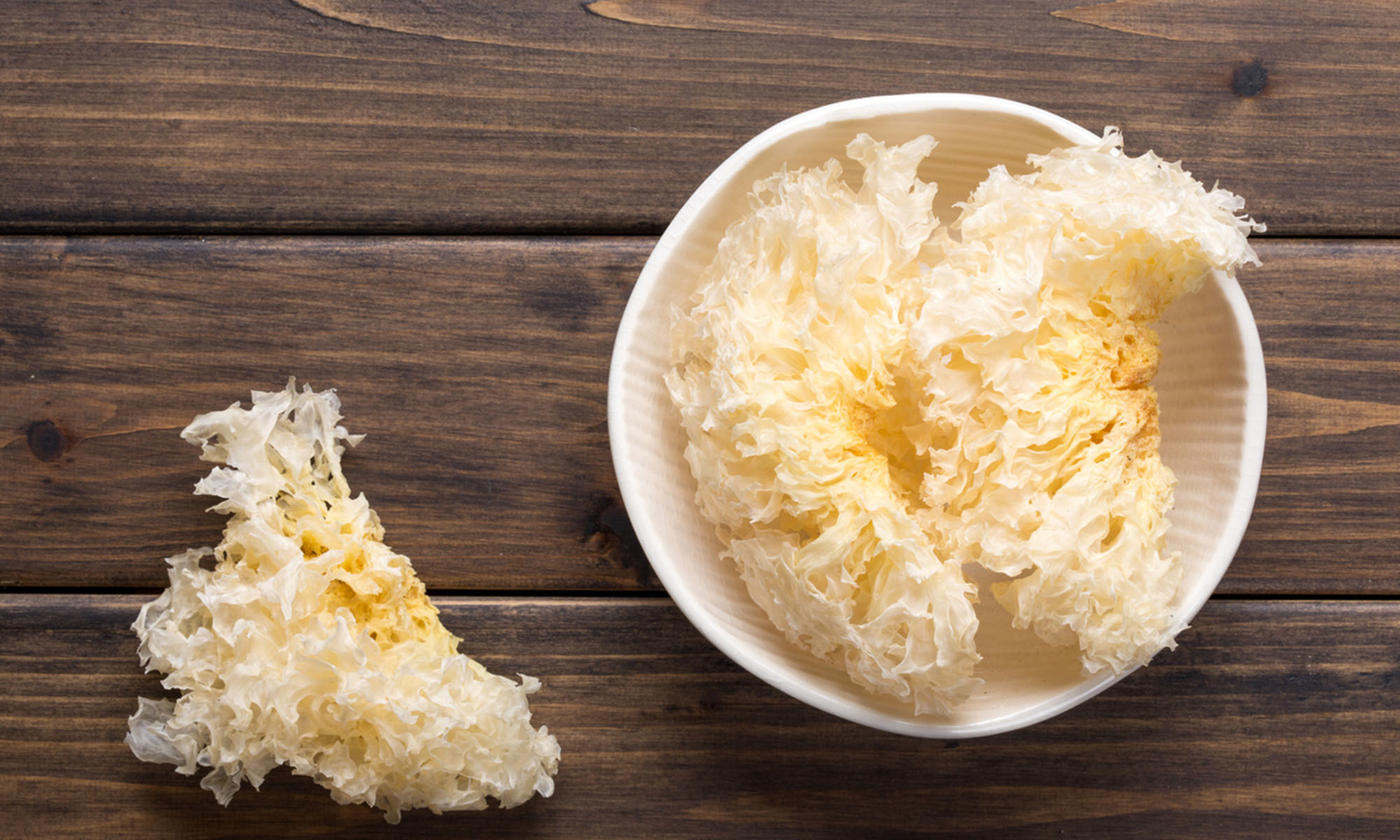Shrooms In Skin Care? Here's What Derms Have To Say About This Buzzy Ingredient
Shrooms in skin care isn't new, but it might be something you want to try.

From the kitchen to the powder room and beyond, mushrooms have been all the rage in recent years. Using mushroom extracts in skin care is not a novel discovery; however, it has been particularly buzzy as of late.
One type of mushroom receiving extra love: tremella—or more commonly referred to as snow mushroom. Ahead, find out where this ingredient comes from and why you might want to add it to your daily skin care routine (in addition to your veggie stir-fry).
A quick history: The tremella mushroom.
This jelly, white and yellow mushroom, called “yiner” or “baimuer” in Chinese, has a rich history of medicinal purposes, both in edible and topical forms. The snow mushroom specifically has been used to promote longevity in China and other East Asian countries for many years.
In culinary practice, these mushrooms can be used to thicken any dish, thanks to their ultra-gelatinous texture. A few popular recipes include snow mushroom soup and mushroom stir-fry, but these shrooms can be steamed, tossed in any salad, and even used for potent extracts of antioxidant power.
Benefits of using snow mushrooms in skin care.
"Mushrooms have many amazing benefits for the skin,” board-certified dermatologist Rebecca Marcus, M.D., FAAD, founder of Maei MD, tells mbg. Mushroom extract is classified as a humectant, which means it pulls water into the skin—similar to the function of an equally buzzy ingredient, hyaluronic acid.
Snow mushrooms in particular contain polysaccharides (aka plant sugars) that coat the skin in a thin film. This film binds to skin cells and also binds to water, which brings hydration into the skin, Marcus explains. Hence, why you should apply humectants like this one to damp skin.
Beyond a plumping hydration boost, “The polysaccharides found in snow mushrooms have antioxidant, anti-inflammatory, and anti-radiation properties,” she says. Snow mushrooms also contain kojic acid, a natural and gentle acid that helps brighten the complexion and fight dark spots by inhibiting melanin synthesis, Marcus says.
But snow mushrooms aren't the only skin-loving shroom out there. In fact, shiitake mushrooms are an equally beneficial fungi. “Similar to the snow mushroom, it is a potent source of kojic acid and therefore acts as a brightener. It also boasts stellar antioxidant, anti-inflammatory, and hydrating properties,” Marcus says.
All in all, snow mushrooms are multi-functional humectants that work wonders to hydrate, brighten, and protect the skin—which is why they’re so desirable for topical use. Not sure where to find shrooms in skin care? Here are a few of our favorite products:
Snow mushrooms have been used for years in Traditional Chinese Medicine and have been particularly buzzy in the beauty space recently. Snow mushroom extract can help hydrate the skin thanks to their humectant properties, and their natural kojic acid makes them one effective skin brightener. If treating dark spots is your main goal, don't sleep on shrooms.

 Aliver
Aliver 































